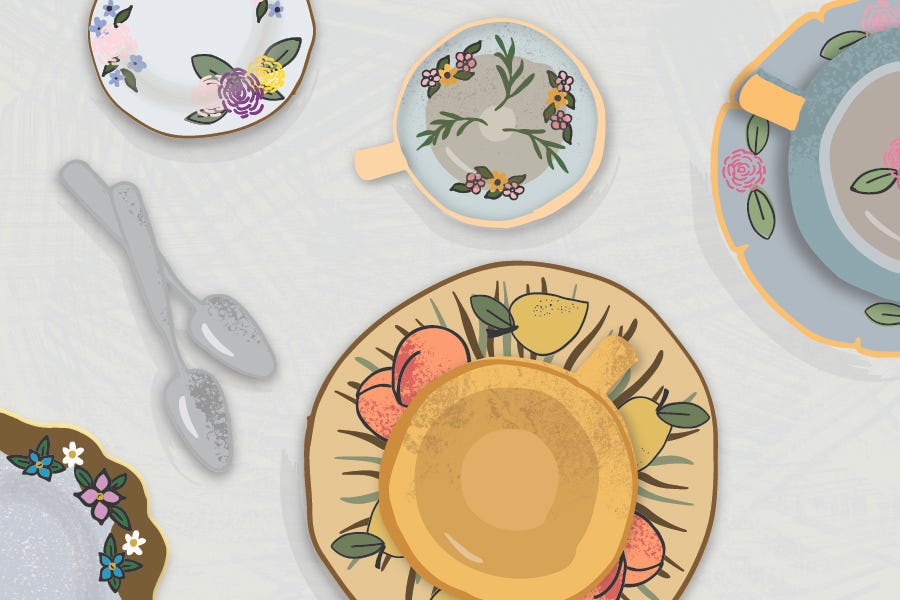This article is part of The Heritage Recipe Project series, where we celebrate culinary heritage, the art of the shared recipe, and create a feast for the eyes as well as the palate.
Often looked down upon as low brow and cheap, the tinned fish is apparently making a come back. You may be interested to know this smelly commodity is indirectly responsible for all of today’s jarred, canned, and tinned ingredients. Some of the recipes that we’ll be visiting this month may make you crinkle your nose, but I think you’ll find this fish story fairly flavorful.

Thank you Napoleon…and Nicolas Appert and Peter Durand
Once upon a time a French confectioner and revolutionary named Nicolas Appert began experimenting with ways to preserve foods. His experimentation would ultimately pay big dividends. At the beginning of the Napoleonic Wars, France was in dire need of stable foods to send to troops as well as feed a country suffering diseases of deficiency which were likely the result of food spoilage. Napoleon offered a reward of 12,000 francs ($868,674.15 in 2023 according to Official Data Corporation). Nicolas submitted his experiments to the French government and took home the 12,000 francs.
Sadly, Nicolas didn’t patent his process and not long after he was awarded his winnings, an English inventor and merchant by the name of Peter Durand would patented his own method which used tin cans rather than glass. The lighter weight as well the shatterproof quality of tin made it convenient to preserve, ship, and carry foods to feed sailors, soldiers, and explorers.

Fish and Freedom
New and improved modern weapons of war - machine guns, chemical warfare, and poison gas to name a few - would create a war fought from the trenches from 1914 - 1918. Oblong ditches dug into the dirt and mud oftentimes became “home” to infantrymen for weeks, months, even years. Feeding these men was tenuous. If it arrived, food was often spoiled or in terrible condition. To address a failing food strategy, the military turned to canned foods. A major supplier of these canned goods was canneries on the Pacific Coast of the United States. Production on Cannery Row went from 75,000 cases in 1915 to 1.4 million by 1918.
Tinned fish would also play a vital role in sustaining both soldiers and civilians during World War II. So much so, that during this time, the US Military would take over the management of many American fisheries. These simple cans of fish provided soldiers not only with physical sustenance but also a taste of home which provided a much needed boost in morale. An ingredient that many say is paramount to winning a war.
Safe, Economical, and Accessible
Two world wars and a great depression catalyzed the consumption of tinned and canned fish into the 1950’s and 60’s. Especially in the US where 85% of the population stocked their pantries with tinned fish.
When thumbing through the recipe cards in my recipe box collection, I was able to find 35 recipes that relied on canned fish. There was even one for Salmon Spoon Bread - I still need to work up the courage to test this one 😄. My vintage cookbook collection was also a treasure trove of canned fish recipes. The Woman’s Home Companion Cook Book published in 1942 lists over 20 recipes that can be made with “home-cooked or canned” fish making it easy for the homemaker to create a dish with an economical protein she likely had on her cupboard shelf. And shelves are likely the reason that we are seeing a resurgence in the consumption of tinned and canned fish today. To be more accurate, the mostly-empty-shelves during the grocery-hoarding-pandemic of 2020 and 21. With most of the fresh meat, especially chicken disappearing within hours of stocking, canned and tinned fish became a popular shelf-stable quarantine food.
So, now you know a little bit of tinned fish history, its impact on world wars, its historic popularity, and why its trending once again.
Stay tuned for some more fish stories, fish recipes, and fish illustrations.
Do you have a recipe, tradition, or story you think would make a great visual narrative, send me an email at connect@asweeat.com
If you would like to further support this project, there are a couple of ways that you can become a patron subscriber. Choose one of the paid tiers here, purchase something from our Amazon wish list, or buy me a tea - I know it says Buy Me a Coffee, but we’re tea gals.
Let’s Stay Connected
Follow us on Instagram @asweeat,
Join our Family Recipes, Traditions, and Food Lore community on Facebook
Subscribe to the As We Eat Journal
Listen to the As We Eat Podcast
Do you have a great idea 💡 for a show topic, a recipe 🥘 that you want to share, or just say “hi”👋🏻? Send us an email at connect@asweeat.com
Looking for a unique gift idea for a birthday, anniversary, holiday, host or hostess, or just because? Consider giving a subscription to the As We Eat Journal.











